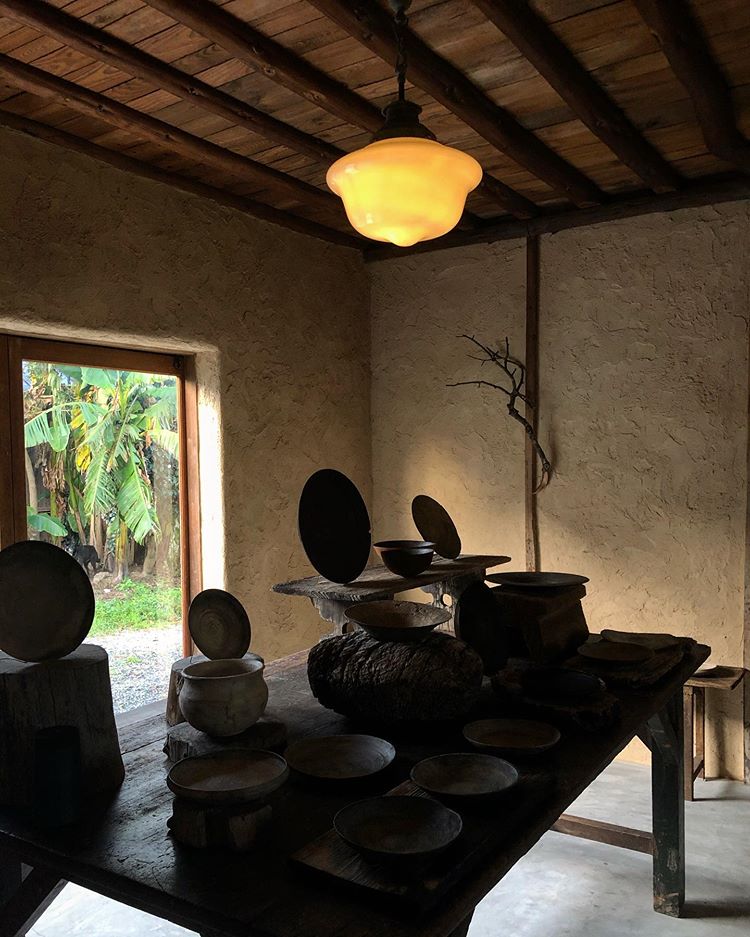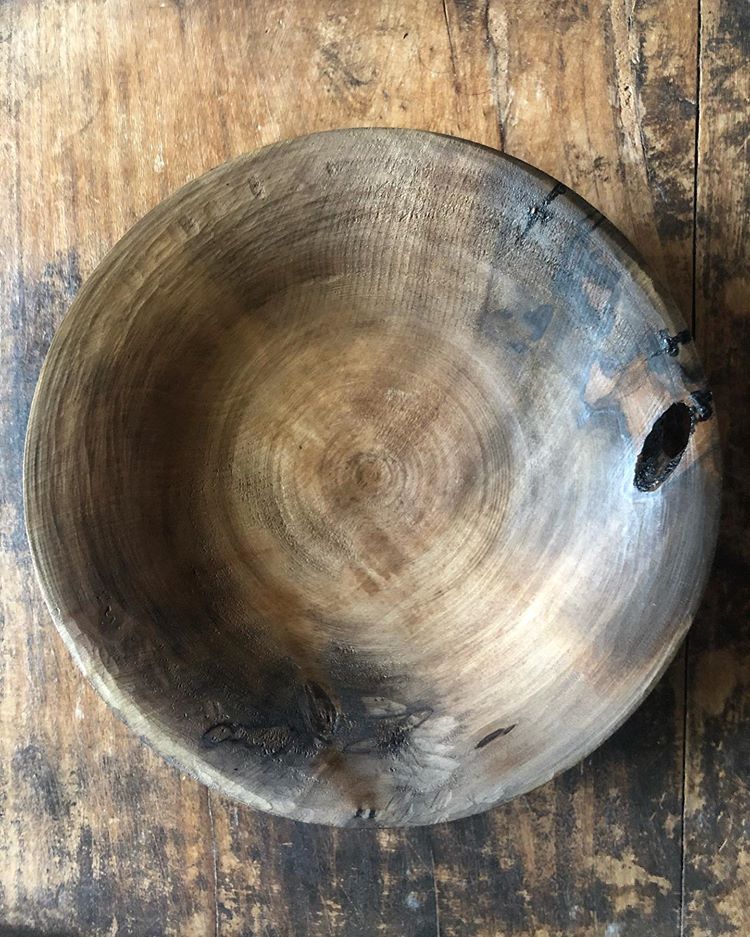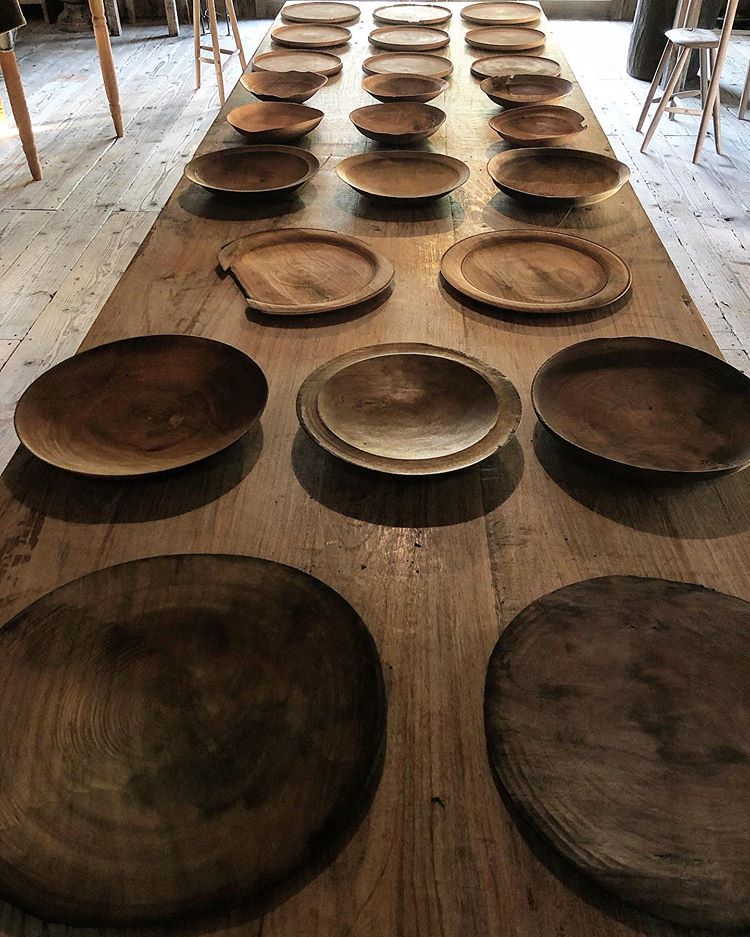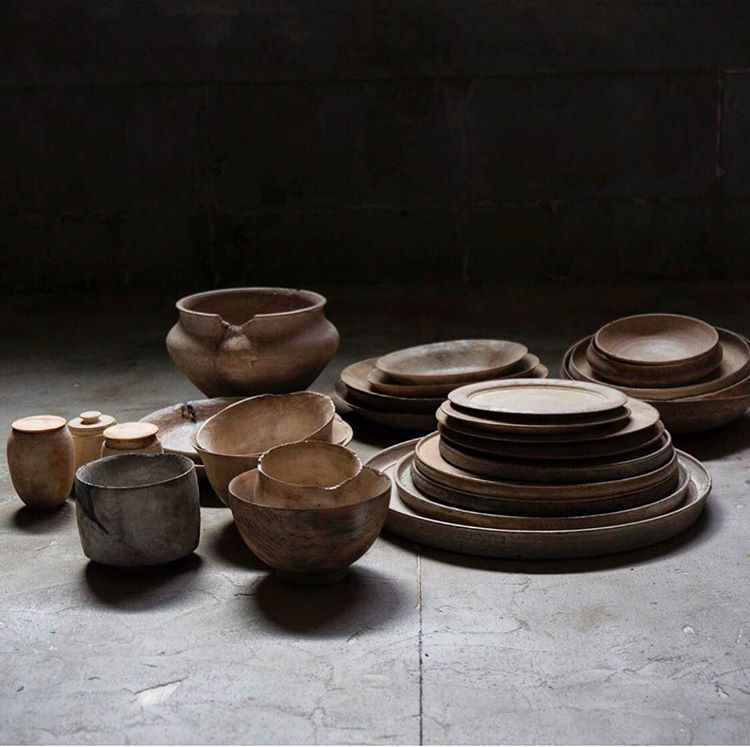Dialogue - Masami Tokuda -

"The most important thing when making things is to listen carefully. When I hear a faint sound while moving my hands and touching the wood, I simply become empty and move my hands to make something."
These are the words of Masami Tokuda, a woodworker who has an atelier in Kagoshima Prefecture and uses wood to create vessels, small wooden items, and furniture.
He plays the guitar, repairs and drives old cars, and enjoys surfing when there are waves. Making things, something he has loved since he was a child, naturally became his job, and he faces it day by day with trial and error.
Where does the driving force behind this action come from? We spoke to him on the first day of the exhibition.
A form that embodies presence

Born and raised in Kagoshima Prefecture, Tokuda loved music and making things from an early age. It was a natural progression for him to start working as a woodworker. He loves working with his hands, and would find old, broken home appliances and take them apart. That's how he became interested in wood, which was all around him. Through trial and error, he created furniture and accessories, and came to understand and master the techniques of woodworking.
"I didn't learn from someone how to use tools or how to finish it, but instead I just kept making it while asking myself if it was okay." He says that the way he makes his pieces is not by drawing a blueprint, but by moving his hands and touching the wood, and the shape changes as he does so.
Tokuda : Trees have existed for a much longer time than humans, and have shapes that go beyond our imagination. When we create things, we can sense some kind of intention behind them, but that's not the case with trees. When we come into contact with wood, we notice a lot of things. The environment of the land where the wood took root, the climate, the competition with the surrounding creatures, the way the branches and leaves are attached. The presence or absence of grain and knots, the thickness and pattern, etc. often determine the purpose of the wood, such as whether it is suitable for making vessels.
Something to accumulate and grow

Some of the wood used in Tokuda's works has rot and spalted marks (black streaks created by bacteria after a tree falls). The dense annual rings, knots and rot are the evidence of the past time the tree has lived through.
Wood is a material that changes significantly over time, such as the color darkening and corners becoming rounded. "The more you use wood, the more beautiful it becomes." Therefore, one of the great attractions of wood is that it can be used for a long time with proper care.
Whether it's the things you wear or the items you use in your daily life, you will grow to love them if you take good care of them.
Embracing the fleeting present

This was the first time that Utsushiki exhibited wooden vessels. There were nearly 300 impressive vessels and accessories on display.
In addition, there will be a "Utsushiki Tea Room" where you can brew matcha tea using tea utensils made and designed by Tokuda himself.
When he started woodworking, he had no intention of making tableware or tea ceremony utensils. This is the guiding principle behind his actions: "I can only make things that are born from my own interest."
When it came to making plates, I started making plates for different purposes after I became interested in cooking, went out to eat delicious food, and began cooking myself.
The reason is quite simple: "I want to make with my own hands, as much as possible, what I want to see and use."
Embracing time and letting it change

"I sometimes think that the act of creating something is closer to instinct than to human consciousness. It's as if all the experiences and knowledge you have up to that point are unconsciously mobilized, and after doing it many times, your body starts to move on its own without you having to think," says Tokuda.
Over the course of more than 100 years, the maker is not conscious of any intention, but rather allows the product to change over time, and the craftsman simply moves his hands calmly, listening to the faint sounds that occur over time.
All sorts of unexpected events occur. The graceful beauty that can accept them resides in Tokuda's work.
Tokuda-san : I am determined that I can only create things. I would like to continue creating works while cherishing this exhibition at Utsushiki and the encounters with the visitors.
After this conversation, I realized that trees have existed long before humans were born and began using wood as tools. Trees have always supported people's lives. Mr. Tokuda's talk expanded my imagination to the fundamental relationship humans have with trees. I am looking forward to seeing how the vessels I pick up change until the next exhibition in 2021.
Interviewer and writer: Yoshiaki Ono

Masami Tokuda Exhibition
Moving my hands and touching the wood
Masami Tokuda says he finds a faint sound there.
The source of a person's strength is clear even without words.
leaking somewhere
He makes his living working with wood, and his furniture and tableware creations have expanded with the times.
What the cook wants from the plate to decorate it
I started cooking to find out the thickness, shape, depth, and size that suits my needs.
Started learning tea ceremony in order to make tea utensils
I want you to discover the subtle sound that exists in all of my works, even if they are all different in shape.
stay tuned

